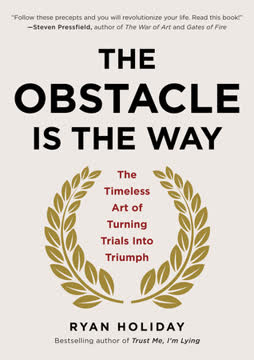Key Takeaways
1. Embrace strategic warfare to gain control and influence
People are constantly struggling to control you—getting you to act in their interests, keeping the dynamic on their terms.
Strategic thinking is essential. In a world where everyone is vying for power and influence, embracing strategic warfare is crucial for survival and success. This doesn't mean engaging in physical violence, but rather adopting a mindset that views interactions as potential battles to be won.
Control the dynamics. By approaching situations strategically, you can:
- Anticipate others' moves and motivations
- Plan several steps ahead
- Influence outcomes in your favor
- Protect yourself from manipulation
Develop strategic awareness. Train yourself to recognize:
- Hidden agendas
- Power plays
- Opportunities for advantage
- Potential threats
By embracing strategic warfare, you transform from a passive participant to an active shaper of your environment, gaining control and influence over your life and interactions.
2. Utilize deception and indirect approaches to outmaneuver opponents
Moving first—initiating the attack—will often put you at a disadvantage: you are exposing your strategy and limiting your options.
Indirection is key. Direct confrontation often leads to strong resistance and predictable outcomes. By employing deception and indirect approaches, you can:
- Catch opponents off guard
- Create confusion and uncertainty
- Open up new avenues of attack
- Preserve your own resources
Master the art of misdirection. Effective strategies include:
- Feints and diversions
- False information
- Gradual, imperceptible moves
- Appearing weak when strong (or vice versa)
Patience and timing. The indirect approach requires:
- Careful planning and observation
- Willingness to play the long game
- Recognizing the right moment to strike
By mastering deception and indirect approaches, you can outmaneuver even stronger opponents, achieving your goals with minimal resistance and maximum efficiency.
3. Master the art of psychological manipulation in conflict
Your goal in war is not simply to amass a stockpile of weapons, to increase your firepower so you can blast your enemy away.
Mind over matter. The most effective warfare targets the mind, not just physical assets. By mastering psychological manipulation, you can:
- Demoralize your opponents
- Sow confusion and discord
- Influence decision-making
- Break the enemy's will to fight
Techniques of psychological warfare:
- Disinformation campaigns
- Exploiting fears and insecurities
- Creating false perceptions
- Manipulating emotions
The power of suggestion. Subtle psychological tactics can be more effective than overt force:
- Plant seeds of doubt
- Create cognitive dissonance
- Use symbolic actions to convey messages
- Exploit cognitive biases
Understanding and manipulating the human psyche allows you to win battles before they're even fought, making your opponents defeat themselves from within.
4. Adapt and innovate to maintain strategic advantage
The critical elements in war are speed and adaptability—the ability to move and make decisions faster than the enemy.
Flexibility is crucial. In a rapidly changing world, the ability to adapt and innovate is essential for maintaining a strategic advantage. This involves:
- Constantly reassessing the situation
- Being open to new ideas and approaches
- Quickly implementing changes when necessary
Cultivate organizational agility:
- Decentralize decision-making
- Encourage initiative at all levels
- Foster a culture of continuous improvement
- Invest in learning and skill development
Embrace technological advancements. Stay ahead by:
- Monitoring emerging technologies
- Experimenting with new tools and methods
- Integrating innovations into your strategy
By prioritizing adaptability and innovation, you can outpace your competitors and remain effective in the face of changing circumstances, ensuring long-term success in your endeavors.
5. Exploit your enemies' weaknesses while protecting your own
Everyone has a source of power on which he or she depends. When you look at your rivals, search below the surface for that source, the center of gravity that holds the entire structure together.
Identify critical vulnerabilities. Success in conflict often hinges on exploiting your opponents' weaknesses while safeguarding your own. To do this effectively:
- Conduct thorough intelligence gathering
- Analyze patterns and dependencies
- Look for hidden flaws in seemingly strong positions
Target the center of gravity. Focus your efforts on:
- Key resources or capabilities
- Critical relationships or alliances
- Psychological or emotional vulnerabilities
Protect your own weaknesses. Simultaneously:
- Conduct honest self-assessment
- Fortify areas of vulnerability
- Create redundancies and contingencies
- Misdirect attention from your weak points
By mastering the art of exploiting weaknesses while protecting your own, you can achieve victory even against seemingly superior forces, using precision and strategy rather than brute force.
6. Cultivate a powerful reputation to deter potential threats
The best way to fight off aggressors is to keep them from attacking you in the first place.
Reputation as deterrence. A carefully cultivated reputation can be a powerful tool in preventing conflicts before they begin. To achieve this:
- Demonstrate strength and resolve
- Create an aura of unpredictability
- Build a track record of successful actions
- Communicate your capabilities effectively
Elements of a powerful reputation:
- Competence and expertise
- Willingness to act decisively
- Integrity and consistency
- Strategic alliances and connections
Manage perceptions actively. Your reputation requires constant maintenance:
- Control the narrative around your actions
- Respond quickly to challenges or threats
- Showcase your strengths selectively
- Address weaknesses proactively
By cultivating a powerful reputation, you create a psychological barrier that deters potential aggressors, allowing you to achieve your objectives with minimal conflict and resistance.
7. Employ divide-and-conquer tactics to weaken opposition
When you look at your enemies, do not be intimidated by their appearance. Instead look at the parts that make up the whole.
Dismantle unified opposition. Large, cohesive groups can be formidable opponents. By employing divide-and-conquer tactics, you can:
- Break down strong alliances
- Create internal conflicts
- Isolate and neutralize key elements
- Deal with smaller, manageable parts
Strategies for division:
- Exploit existing tensions or differences
- Create incentives for defection
- Sow distrust and suspicion
- Target weak links in the opposition
Consolidate your position. As you divide your opponents:
- Form alliances with dissenting factions
- Strengthen your own unity and cohesion
- Prevent the re-formation of opposing groups
By mastering divide-and-conquer tactics, you can overcome seemingly insurmountable opposition, turning your enemies' strength against them and creating opportunities for victory.
8. Harness the power of timing and momentum in your campaigns
In a world in which many people are indecisive and overly cautious, the use of speed will bring you untold power.
Timing is everything. The success of your strategies often depends on when and how quickly you execute them. To harness the power of timing:
- Develop a keen sense of opportune moments
- Act decisively when the time is right
- Create and exploit momentum
- Catch opponents off-balance
Build and maintain momentum:
- Start with small, quick victories
- Chain successes together
- Accelerate your pace as you gain ground
- Keep opponents reacting rather than initiating
Avoid the pitfalls of poor timing:
- Premature action
- Missed opportunities
- Loss of initiative
- Allowing opponents to regain footing
By mastering the art of timing and momentum, you can achieve remarkable results with minimal resources, overwhelming opponents before they can mount an effective defense.
9. Develop a grand strategy that aligns all your actions
Grand strategy is the art of looking beyond the battle and calculating ahead.
Think beyond individual battles. A grand strategy provides a comprehensive framework for achieving long-term objectives. To develop an effective grand strategy:
- Define clear, overarching goals
- Analyze the broader context and trends
- Anticipate future challenges and opportunities
- Align all actions and resources toward your ultimate aims
Elements of a successful grand strategy:
- Flexibility to adapt to changing circumstances
- Integration of diplomatic, economic, and military tools
- Long-term perspective that transcends immediate conflicts
- Balance between offensive and defensive postures
Implement and refine your strategy:
- Communicate the vision clearly to all levels
- Regularly assess progress and make adjustments
- Maintain focus on ultimate objectives amid daily challenges
- Cultivate strategic thinking throughout your organization
By developing and adhering to a grand strategy, you ensure that all your actions contribute to your larger goals, avoiding wasted effort and maximizing your chances of long-term success.
Last updated:
FAQ
What's The 33 Strategies of War about?
- Strategic Warfare Insights: The book by Robert Greene distills military strategies into practical advice for personal and professional conflicts, emphasizing that life is a series of battles.
- Five Parts of Warfare: It is divided into five parts: Self-Directed Warfare, Organizational Warfare, Defensive Warfare, Offensive Warfare, and Unconventional Warfare, each offering applicable strategies.
- Historical Examples: Greene uses historical figures and events, such as Napoleon and Sun-tzu, to illustrate each strategy, helping readers understand their real-world applications.
Why should I read The 33 Strategies of War?
- Practical Application: The book offers strategies that can be applied to everyday conflicts, enhancing decision-making and leadership skills.
- Understanding Human Nature: It delves into the psychology of conflict, providing insights into personal and others' motivations, improving interpersonal relationships.
- Timeless Wisdom: The strategies are based on historical wisdom, offering a rich resource for anyone interested in strategy, leadership, or personal development.
What are the key takeaways of The 33 Strategies of War?
- Self-Directed Warfare: Emphasizes understanding oneself and one's inner enemies, with strategies like the Polarity Strategy to identify and combat personal weaknesses.
- Organizational Warfare: Focuses on structure and leadership, highlighting the need to avoid groupthink and maintain a clear chain of command.
- Defensive and Offensive Strategies: Teaches how to pick battles wisely and when to retreat strategically, with strategies like the Death-Ground Strategy to create urgency.
What are the best quotes from The 33 Strategies of War and what do they mean?
- “The life of man upon earth is a warfare.”: Highlights the book's theme that life is filled with conflicts requiring strategic thinking.
- “In war, the moral is to the physical as three to one.”: Emphasizes morale's importance over sheer numbers, suggesting a motivated group can outperform a larger force.
- “You are your own worst enemy.”: Reminds readers that internal conflicts can hinder progress, stressing the importance of addressing these struggles.
How does Robert Greene define "moral warriors" in The 33 Strategies of War?
- Definition of Moral Warriors: Individuals or groups using morality as a weapon, often positioning themselves as victims to manipulate public perception.
- Types of Moral Warriors: Unconscious moral warriors act from weakness, while conscious ones exploit moral high ground strategically.
- Combatting Moral Warriors: Maintain emotional control and expose hypocrisies to reclaim the moral high ground, requiring strategic thinking.
What is the Polarity Strategy in The 33 Strategies of War?
- Identify Your Enemies: Emphasizes the need to clearly identify both external and internal enemies for clarity and direction.
- Declare War Internally: Encourages an internal declaration of war against obstacles, filling you with purpose and motivation.
- Use Enemies as Motivation: Enemies can serve as a source of energy and focus, channeling opposition into achieving goals.
What is the "Fait Accompli" strategy in The 33 Strategies of War?
- Definition of Fait Accompli: Involves taking decisive action to secure an advantage before opponents can react, relying on surprise.
- Historical Example: Illustrated by General Charles de Gaulle's gradual power accumulation through small, unnoticed actions.
- Practical Application: Focus on small, manageable steps toward goals, remaining under the radar to avoid opposition.
How does The 33 Strategies of War suggest handling setbacks?
- Maintain Presence of Mind: The Counterbalance Strategy emphasizes staying calm and collected during setbacks for better decision-making.
- Learn from Mistakes: Analyze failures to adjust your approach, turning setbacks into valuable learning experiences.
- Reframe the Situation: View setbacks as opportunities to regroup and reassess, maintaining morale and focus on future goals.
What is the Blitzkrieg Strategy in The 33 Strategies of War?
- Definition of Blitzkrieg: Involves using speed and suddenness to overwhelm opponents, maintaining relentless pressure to induce panic.
- Historical Example: Cited with the German army's 1940 invasion of France, where rapid movements led to swift victory.
- Application in Daily Life: Encourages decisive action and momentum in conflicts, creating urgency that forces opponents to react.
How does The 33 Strategies of War define Grand Strategy?
- Concept of Grand Strategy: Focuses on long-term goals and outcomes, looking beyond immediate battles for broader context.
- Importance of Foresight: Successful strategists anticipate challenges and opportunities, allowing effective decision-making.
- Historical Examples: Figures like Alexander the Great used grand strategy to achieve objectives, seeing the bigger picture.
What is the Divide-and-Conquer Strategy in The 33 Strategies of War?
- Definition of Divide-and-Conquer: Involves breaking down larger problems or enemies into smaller, manageable parts.
- Psychological Manipulation: Creates internal conflict within an enemy's ranks, leading to their downfall.
- Historical Application: Illustrated with military history examples where leaders divided enemies to achieve victory.
How can I apply the strategies from The 33 Strategies of War in my daily life?
- Identify Your Goals: Clarify objectives and desired outcomes to guide actions and decisions.
- Observe and Adapt: Pay attention to interaction dynamics, applying strategies based on responses.
- Practice Psychological Tactics: Use deception, speed, and manipulation to navigate conflicts and achieve goals.
Review Summary
The 33 Strategies of War receives mixed reviews. Many praise its historical examples and strategic insights, finding it applicable to modern life and business. Readers appreciate Greene's writing style and depth of research. Some consider it eye-opening and life-changing. However, critics argue it promotes a cynical, manipulative worldview. Some find it repetitive, overly long, or difficult to read. Despite polarizing opinions, many readers recommend it for those interested in strategy, history, and personal development.
Similar Books








Download PDF
Download EPUB
.epub digital book format is ideal for reading ebooks on phones, tablets, and e-readers.













